Bicycle mudguards 26 inches: varieties and tips for choosing

Fenders (fenders) are usually not included with a new bike. Therefore, they have to be purchased separately. Nowadays, the choice of bicycle fenders is very extensive: they differ in size, material, design, mount and cost. By the way, the cost can vary dozens of times, and it often becomes a decisive condition when buying, although this is not entirely true. Also, wings are often acquired, taking into account the simplicity of fastening and an attractive design, which is also not very correct.
The consumer may not realize that they are meant not so much for decoration as for protection, as the rear wheel throws mud on the cyclist's back and the front wheel in the face.
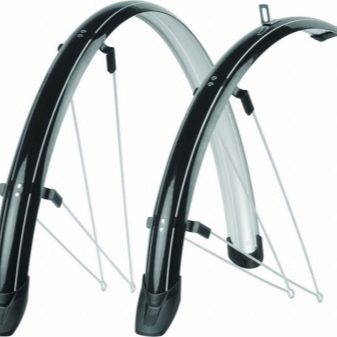

What it is?
Fenders are a removable or stationary type, metal or plastic protection, which is fixed to the fork located above the wheels, and protects against various troubles: water, dirt and splashes. They differ in mounting options, level of protection, and have different sizes.
However, the presence of wings cannot serve as a guarantee of absolute protection from everything that was mentioned above. Not every wing is 100% capable of performing its functions, despite the large variety of these accessories.

Main varieties
Before taking on the choice of a component, you should consider the types of wings. According to the material of execution, they are:
- plastic;
- metal.
This is the basic raw material. There are also fenders made with carbon fiber (carbon fiber). Their advantage is in the best weight parameters.
By the method of fixation there are:
- quick-detachable;
- stationary (another name is full-size).
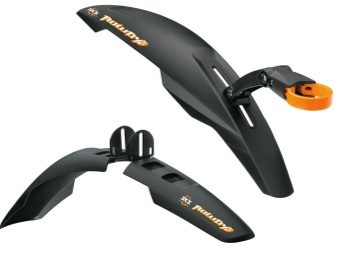
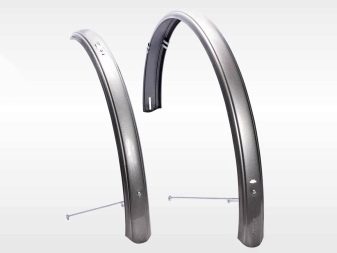
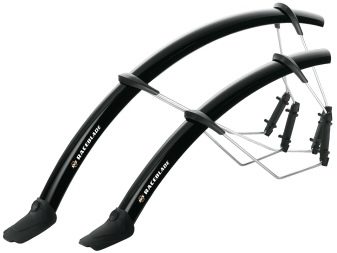

Quick-detachable
This type of protection is mostly plastic, more suitable for mountain bikes. It is fixed to the forks through the holes in them. All screws are included with the element.
Just before purchasing, you need to make sure that these holes are present on the bicycle forks.
In a different scenario, you will need a quick-release protection with a different fixation method. The rear wing is mounted on a pin connecting the saddle to the frame by means of a clip or a belt.
The front fender has a bolt that screws into the front fork bushing to secure it in place. The structure of the wings makes it possible to adjust the height.
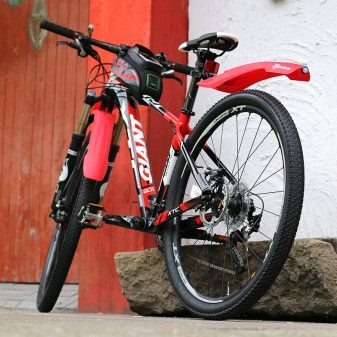
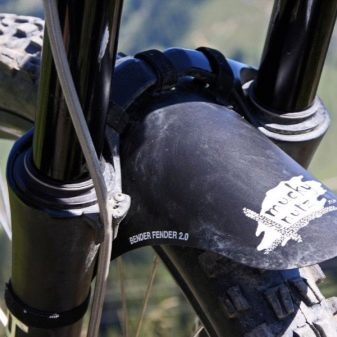
The advantages of this type include:
- little weight;
- ease of installation and dismantling;
- ease of cleaning;
- impressive clearance between the fender and the tire.
By the way, the equal distance from the protection to the tire has both positive and negative aspects. The mountain bike is equipped with solid tire tread. When the distance to the protection is insignificant, dirt will begin to cram under it, and it will be difficult to clean it out of there. And at a great distance, clods and splashes will fly in different directions, reducing the practicality of a bicycle wing.
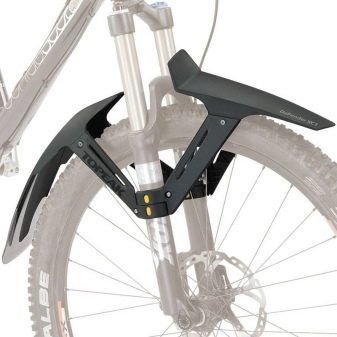

The disadvantages of quick-release components include:
- low level of protection (a consequence of the large clearance);
- low strength (usually made of plastic);
- poor fixing of fasteners.
Because this type of shields is held on a single bolt, and individual samples are completely on a clamp, when moving through areas with difficult conditions for movement, components can move. And given the fact that quick-detachable ones are put on mountain bikes, which rarely move on a flat asphalt surface, the protection constantly needs to be corrected.
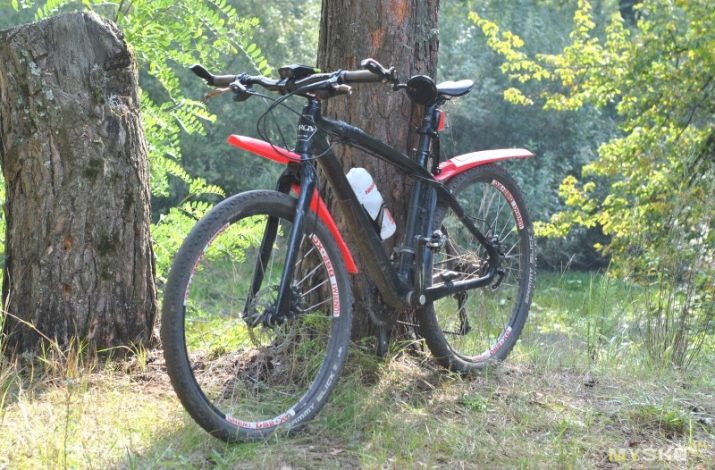
Stationary
Such samples are called full-size, because they are quite tightly adjacent to the tire and in fact cover a significant part of the wheel. As a result, they provide much better protection against splashes and dirt.
In short, the positive qualities of stationary protection elements are the minuses of the quick-change ones, and the advantages of the quick-detachable ones are the minus of the full-size ones.
Advantages:
- reliable fixation;
- high level of protection, since the wing is installed close to the tire;
- good strength of the material of manufacture.
Cons of stationary elements:
- you need specialized ears on the bike frame and fork to fix this type of bike wing;
- dirt can accumulate between the fenders and tires (due to the small clearance);
- higher wing weight;
- non-versatility of fastening.
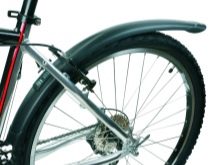

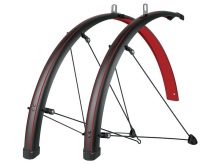
Peculiarities
Cyclists say the 26-inch full-size mudguard deserves special attention. It not only looks neat, but also protects the cyclist from water and dirt. This is facilitated by the fact that the part covers essentially 50 percent of the wheel.
Production material can be: plastic, metal-plastic or lightweight metal. This makes it possible to manufacture a not very heavy structure, but rather strong. In some versions, the parts are water-repellent.
Among other things, if there are no suitable fasteners on the bike, you can pick up modifications on which there are specialized clamps that are fixed directly to the vehicle frame.
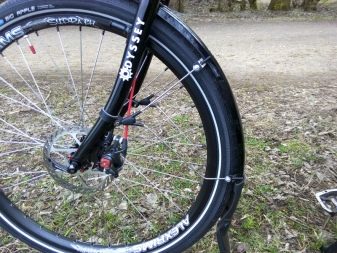

Choice
First of all, you should understand how all the options available differ. The following parameters will be important here:
- bicycle wheel size: 26, 27.7 or 29 inches;
- wing creation material: metal or plastic;
- fastening methods: stationary or quick-detachable;
- in places for mounting on a bicycle;
- by the level of protection: short or long.
Knowing the wheel diameter, you can easily select the right wing.
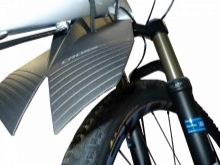
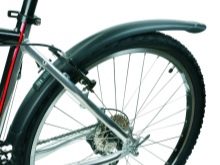
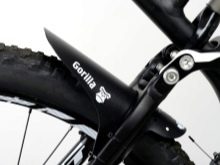
For mountain bike (mountain bike)
The full-size fenders are not suitable for mountain riding, due to the fact that the massive tread of a mountain bike will suck in mud and clog the gap between the wheel and protection with it. Better to purchase plastic quick-release elements.
For road cycling
Here, weight and aerodynamic performance are a priority. Full-size plastic (or carbon) fenders are used for road bikes. They are quite lightweight, perfectly resist the build-up of dirt and are essentially unobtrusive. Without them, driving around the wet city streets is uncomfortable, therefore, for road modifications it is advisable to buy full-size samples.

For light city bike (city bike)
It will not take a long time to "rack your brains" in resolving the issue, you can immediately put a protection of a large diameter, which will closely adjoin the wheels. Moreover, rubber mudguards are installed on the lower part of the front and rear fenders. You can buy them additionally at a sporting goods store or directly with a set with wings. You can also choose your wings by color (even white).
When in doubt, whether there is a need to purchase double protection for the front and rear wheels, it is preferable to install on the rear. One such inexpensive option would be a metal wing. It is characterized as full-size, it is also called the classic look, since it covers the largest part of the wheel.


The above options show that there is no multifunctional protection against dirt and water. But it is indisputable that the more correct the ratio of the wing to the wheel and the closer they are to each other, the greater the level of protection.
Conclusion
I must say that many people make their choice of cycling wings based on their price. This is not a very correct approach, since inexpensive Chinese-made samples are made of fragile plastic, which can crack or split as a result of impacts of several stones at high speed, as a result of which the protection will cease to fulfill its task. In the same time the cost of branded cycling wings is not so high as to try to profit from it... In such a case, it is advisable to pay only once and enjoy riding for more than one year, rather than changing the wings every season.
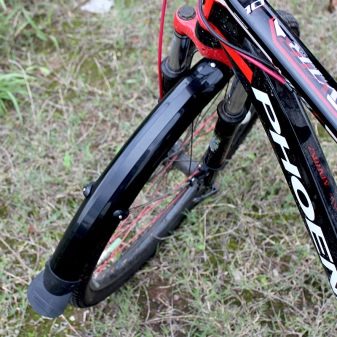

For an overview and rules for choosing fenders for a bicycle, see below.








